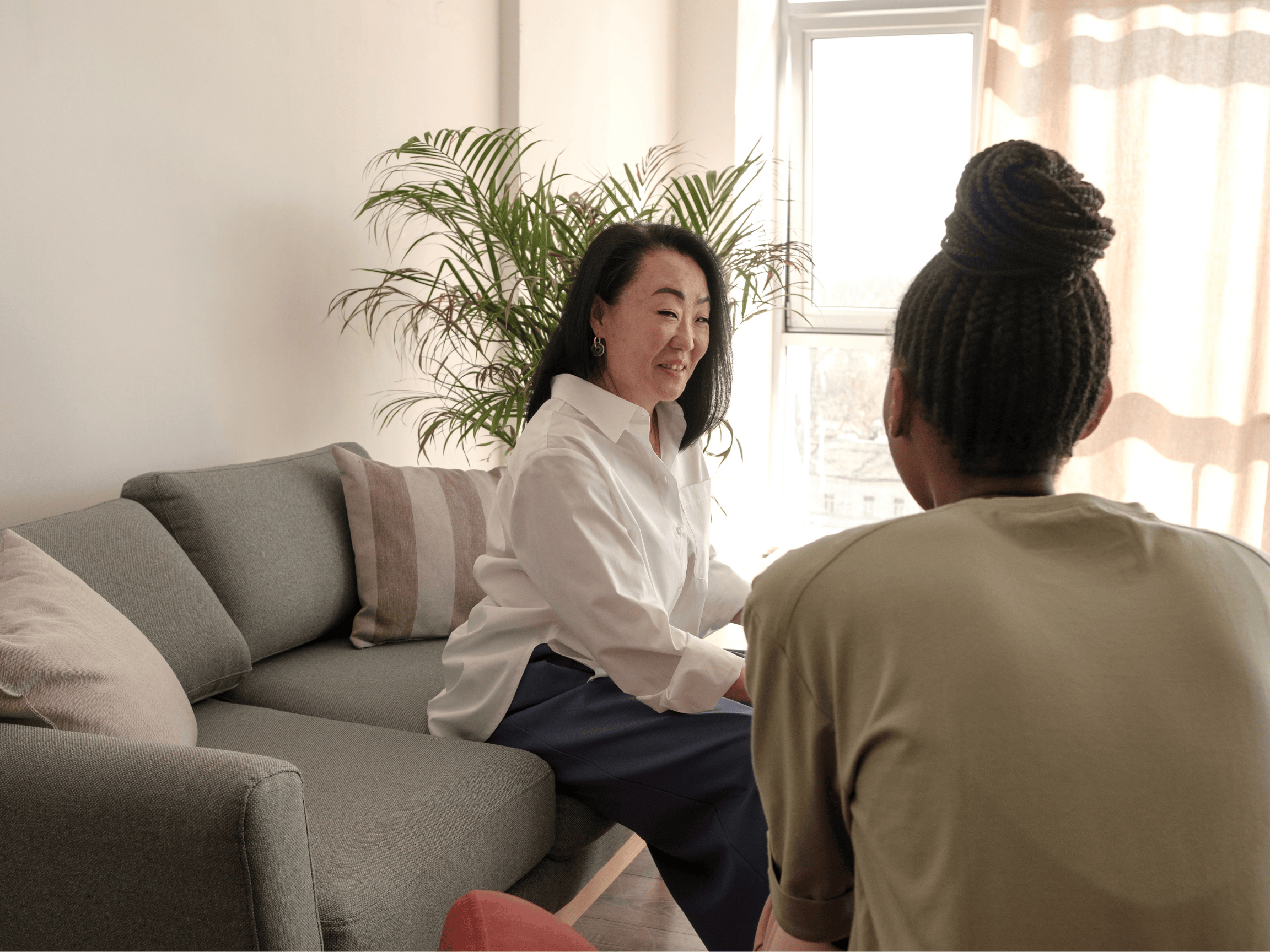It is no secret that relationships take hard work. Even the strongest partnerships can face moments of disconnect, stress, or misunderstanding as people grow and change over time. When relationships feel tense, many people find themselves asking: “Are we just going through a rough patch or is it something deeper?” or “Could couples therapy actually help us reconnect?”
It has been well-established in research that relationship satisfaction is a huge predictor of health and well-being, as relationship satisfaction and mental health follow similar trends.
Couples therapy offers both partners a safe and collaborative space to explore issues and work together towards a solution. It provides a structured environment where partners can learn to understand their relationship dynamics, and build a strong foundation for relationship satisfaction.
What Happens in Couples Therapy?
Couples therapy begins with the therapist getting to know your relationship: your history, communication patterns, individual backgrounds, and conflicts. Rather than assigning blame to a specific person, a therapist helps to identify recurring cycles of conflict or misunderstanding. Couples work together with a therapist to set shared goals, learn and practice skills, and facilitate open dialogue. Through couples therapy, individuals can learn skills such as improving communication, increasing intimacy, or rebuilding trust, and these serve to rebuild a relationship.
Couples therapy is an ever-evolving field that is only becoming more common. It serves relationships of all demographics, including LGBTQ+ partners, and couples from diverse cultural and ethnic backgrounds. By addressing both individual and shared experiences, couples therapy not only promotes healthier relationships, but also improved emotional well-being and personal growth. It is a tool to help couples rebuild stronger, more resilient partnerships that thrive long after therapy ends.
How is Couples Therapy Different from Individual Therapy?
Unlike individual therapy, which only focuses on a single person’s experiences, couples therapy is centered on the relationship itself. The therapist views the couple as a unit, and works to understand the role each partner plays in the relationship. Instead of focusing on one person’s issues in isolation, couples therapy explores how individual differences and emotions intertwine to shape the relationship.
Couples therapy involves teaching shared strategies to help couples work through their hardships. Strategies such as tracking patterns of behaviours, active listening, encouraging experiences to build connection, and recognition of common ground, are only a few methods that couples therapists use. Sessions emphasize collaboration, problem solving, and mutual understanding. It is a collaborative approach where the couple and therapist work together to find a solution. The therapist acts as a neutral, bias-free, nonjudgmental guide, helping each partner feel heard, while facilitating healthier ways to communicate to one another.
When to Consider Couples Therapy
Couples therapy can be beneficial at many stages of a relationship, not just during times of crisis. It can help to address challenges early before they become more serious. Common reasons couples seek therapy include:
- Communication problems
- Trust issues
- Struggles in the bedroom
- Problems with emotional intimacy
- New life stress or transitions, such as parenthood, moving, or new job
- Individual problems that are being exacerbated by relationship problems, such as anxiety, mood, or substance use disorders
Myths about Couples Therapy
Myth 1: Couples therapy is only for relationships in crisis.
Many people believe that couples therapy is only for those who will split up soon, but in reality, it is commonly sought proactively to strengthen connections before problems escalate. It can be used to help couples notice and tackle problems early, and prevent future conflict.
Myth 2: We should be able to fix our relationship ourselves.
While self-reflection is valuable, some relationship issues may require an outside perspective to break unhealthy cycles. Couples therapy provides tools, structure, and a neutral space for partners to address challenges more effectively than they might on their own.
Myth 3: Seeking couples therapy is a sign of weakness.
Asking for help is not a sign of weakness. It’s a sign that you’re willing to grow, strengthen your connection, and build a healthier relationship. It is a tool that can help to create lasting change and deeper understanding between partners.
Myth 4: The therapist will take sides.
Therapists are trained to remain neutral and to create a safe space where both partners feel comfortable sharing what is on their mind. Their role is to uncover and help navigate unhealthy patterns in the relationship without assigning blame.
Outcomes of Couples Therapy
Research consistently supports the notion that partners who have gone to couples therapy support its effectiveness in reducing relationship distress. Couples report it helping manage symptoms of anxiety, depression, PTSD, and substance abuse issues, while also relieving symptoms of emotional, behavioural, and physical health concerns as well. Studies also show that couples reported that therapy has helped them through difficulties around sexual and emotional intimacy, trust breaches from infidelity, and intimate partner violence.
On the positive side, therapy has been reported to teach partners skills that are crucial to sustaining a healthy relationship. These skills include knowing how to best support your partner, healthy communication, paying attention to their unique needs, and more.
Conclusion
Healthy relationships require maintenance. They take ongoing effort, patience, and commitment from both partners. While couples therapy can be a powerful tool, it isn’t a one-size-fits-all, magic solution. It can provide guidance and a safe space to work through problems, but lasting change comes from both partners applying what they have learned in therapy.
Couples therapy represents a cultural shift as well as innovation. Seeking help has become more normalized, and the discipline continues to evolve; integrating technology, neuroscience, and an understanding of intersectionality to serve the diversity of relationships today.
Investing in your relationship is investing in your well-being: strong partnerships not only support emotional health, but also work to increase well-being in general. Seeking help through couples therapy can be a meaningful step toward building and maintaining connection, and reaching out for support is a sign of strength, and commitment to a relationship.
Baucom, D. H., Belus, J. M., Adelman, C. B., Fischer, M. S., & Paprocki, C. (2014). Couple‐based interventions for psychopathology: A renewed direction for the field. Family Process, 53(3), 445–461. https://doi.org/10.1111/famp.12075
Diener, E., Suh, E. M., Lucas, R. E., & Smith, H. L. (1999). Subjective well-being: Three decades of progress. Psychological Bulletin, 125(2), 276–302. https://doi.org/10.1037//0033-2909.125.2.276
Lebow, J., & Snyder, D. K. (2022). Couple therapy in the 2020s: Current status and emerging developments. Family Process, 61(4), 1359–1385. https://doi.org/10.1111/famp.12824















